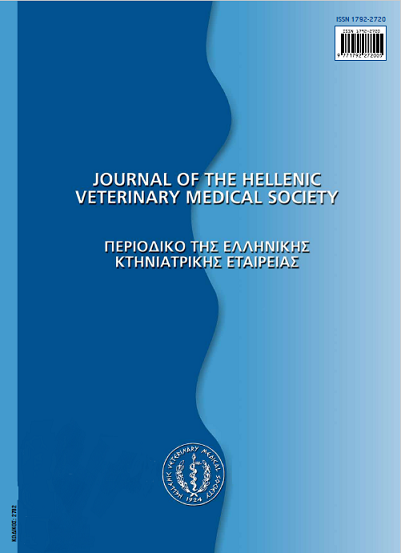Characterization of a novel recombination event in the Deformed wing bee virus polymerase gene

Abstract
Honeybee populations are known to be infected by numerous viruses. Reverse transcription-PCR (RT-PCR) of regions of the RNA-dependent RNA polymerase is often used to diagnose the presence in apiaries and also to classify the type of virus detected. In this report, through analysis of the RdRp gene, we describe a novel recombination event in the DWV genome. Similarity plot analysis amplified from hundred positive individuals identified a previously undescribed recombination point in the 5’ region of the polymerase gene. To our knowledge this is the first description of recombination in the DWV polymerase gene and highlights the continuous genetic evolution of these viruses.
Article Details
- How to Cite
-
GORAS, G., RUETHER, I., TANANAKI, C., GOUNARI, S., LIOLIOS, V., KANELIS, D., ARGENA, N., RODOPOULOU, M., KARAZAFIRIS, E., & THRASYVOULOU, A. (2018). Characterization of a novel recombination event in the Deformed wing bee virus polymerase gene. Journal of the Hellenic Veterinary Medical Society, 68(4), 661–668. https://doi.org/10.12681/jhvms.16071
- Issue
- Vol. 68 No. 4 (2017)
- Section
- Research Articles

This work is licensed under a Creative Commons Attribution-NonCommercial 4.0 International License.
Authors who publish with this journal agree to the following terms:
· Authors retain copyright and grant the journal right of first publication with the work simultaneously licensed under a Creative Commons Attribution Non-Commercial License that allows others to share the work with an acknowledgement of the work's authorship and initial publication in this journal.
· Authors are able to enter into separate, additional contractual arrangements for the non-exclusive distribution of the journal's published version of the work (e.g. post it to an institutional repository or publish it in a book), with an acknowledgement of its initial publication in this journal.
· Authors are permitted and encouraged to post their work online (preferably in institutional repositories or on their website) prior to and during the submission process, as it can lead to productive exchanges, as well as earlier and greater citation of published work.


